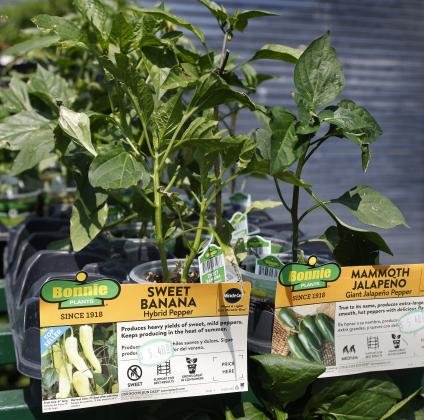SEDAN, Kan. — Ali Cude has a problem.
It’s all about peppers – jalapeno and banana.
And it’s getting worse.
For Cude, the office manager at Sedan Floral, a giant plant wholesaler, the pepper problem – or ‘Jalapenogate’ as it’s being called on social media – began last week when customers told her their jalapeno plants weren’t living up to their name. The plants, it seemed, were producing banana peppers instead of jalapenos.
“People were contacting us right and left,” she said. “It grew pretty quickly.”
After that, Cude and her staff began reviewing what type of seed and how much of the seed was ordered. “We determined fairly quickly that our inventories were accurate and that we needed to continue to search for the problem. We maintain and monitor inventories rigorously on all crops produced, as well as tags and trays used each season,” she wrote in a post on Facebook.
Cude, whose company distributes products throughout Oklahoma and Texas, quickly discovered the problem wasn’t just confined to Kansas. It was all across Oklahoma, Texas and as far away as Michigan.
Understanding the problem was simple: mislabeled seeds.
Fixing the problem, however, is proving difficult.
To understand the history of a jalapeno, look to Mexico. Various histories about the pepper report that jalapenos have been used in food for thousands of years and are considered a staple of the Mexican diet along with rice, corn and tomatoes.
Jalapeno translated, means from Jalapa – the city in Mexico where the pepper was first cultivated. The jalapeno plays a major role in cooking for many cultures and the pepper is a perennial favorite in Oklahoma.
The typical jalapeno is deep green – it turns red when ripe and roughly three to four inches long. Known as the ‘fat chili’ pepper due to its round shape, the jalapeno is thicker and is known for its crunch.
Jalapenos also have their own heat index or ranking on how hot that particular to the taste that variety of jalapeno is. The index, called the Scoville Heal Unit, ranges from a low (call that spicy) ranking of 2,500 to a high of more than 8,000 (you’ll need help).
Oklahoma State University’s Agricultural Extension Office reports that the expected yield of peppers – those grown with good management techniques – is between 8,000 to 12,000 pounds per acre in Oklahoma.
California remains largest all-pepper producer in the U.S., with about 320,000 metric tons each year.
Banana peppers, also known as the yellow wax pepper, are another type of chili pepper with roots in South America. Banana peppers are typically longer and can range from bright yellow to green when unripe.
While banana peppers are also used by many cultures, the banana pepper is not considered a hot pepper. It’s Scoville Unit rankings typically range from zero to 500 units.
No chef will ever accuse a banana pepper of adding to much kick to the salsa.
Back in Kansas, Cude continued to investigate the cause of the mislabeled seeds. At the same time, in Oklahoma, some residents turned to the local Ag Extension office.
“We have had a couple of our master gardeners tell us about the problem,” said LaDonna Hines, director of the Oklahoma County Ag Extension Office. “We have heard from people who have experienced it.”
Josh Campbell, an agriculture educator with the office, said some vendors had contacted the agency about the problem but little else was known. “We definitely have had people contact us who have experienced it,” he said. “But I don’t know that we have much information of offer as to how it happened.”
While some extension offices have had firsthand accounts of the mislabeled seeds, a spokesman for the state Department of Agriculture said they were unaware of the problem until this week.
Lee Benson, a public information office for the agency, said ag officials didn’t consider the issue trivial if state consumers were purchasing products without proper labeling. Benson said all agricultural products sold in Oklahoma must be labeled property.
“We encourage Oklahomans to alert ODAFF (Oklahoma Department of Agriculture, Food, and Forestry) to any instances that may involve products for sale that are not labeled in the correct way,” he said.
Benson said that now, since the agency is aware there is an issue with plants being labeled improperly, the ag department will begin investigating the problem.
In Kansas, Cude and her staff continue to reach out to customers and update postings on social media. She said that issue appears to be more widespread than she imagined.
“Greenhouses across the country are reporting the same issues,” Cude said. “Complaints are also being made of seed packets sold at retail.”
She said it also was possible that other plants may be affected.
“It is also possible that more than just jalapenos may be affected,” Cude wrote in a Facebook post. “But they (jalapenos) are the most popular variety that consumers have been reporting. We have been in contact with out seed vendors but have not received definitive answers.”
For the time being, some gardeners who are taking the problem in stride say they remained concerned about future. “For right now, I guess it’s banana peppers,” said Susie Sells-Bean, an Oklahoma City jalapeno fan. “I just hope there’s not a shortage of jalapenos next year.”


